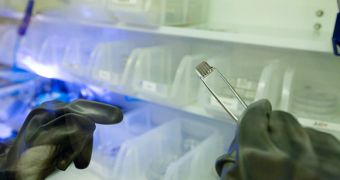One more time, like it was the case for penicillin, X-rays, or the recent discovery of an exoplanet by a group of young students, proof has been made that science is often the result of accidents. This time, a team of UCLA scientists and, more specifically, a graduate student by the name of Hsiang-Yu Chen, have discovered a material that would overshadow our current highly-regarded cameras, while looking for something else.
Chen was actually looking to improve solar cells when the material, instead of generating electricity when exposed to light, changed conductivity, hinting to its photoconductivity ability that could be the key to its usage as a photo sensor. "The original purpose [was] to make a solar cell more efficient. However, during the research we found the solar cell phenomenon [had] disappeared," explains Chen, quoted by Wired.
She was experimenting with plastic-like materials that contained virus-sized quantum dots that have semiconducting characteristics, which were demonstrated to be able to provide much higher resolution to photo sensors, and since it's a polymer film, this material could soon become very cheap to obtain, unlike the current silicon sensors. It will also be more flexible than the flat silicon ones, thus reducing the edge distortion generated by the curved lenses.
This fortunate finding may be crucial to our holding and using a far better imaging device in just a few years from now. Currently, the laboratory Chen works in is still focusing on their work related to the improvement of solar cells. Still, since the results of the unexpected discovery have already been published, it surely won’t long before the best camera manufacturing companies learn of the technology and offers are being made. Hopefully, the one that gets the upper hand in the competition will exploit this breakthrough finding in the best possible way for us, the consumers.

 14 DAY TRIAL //
14 DAY TRIAL //